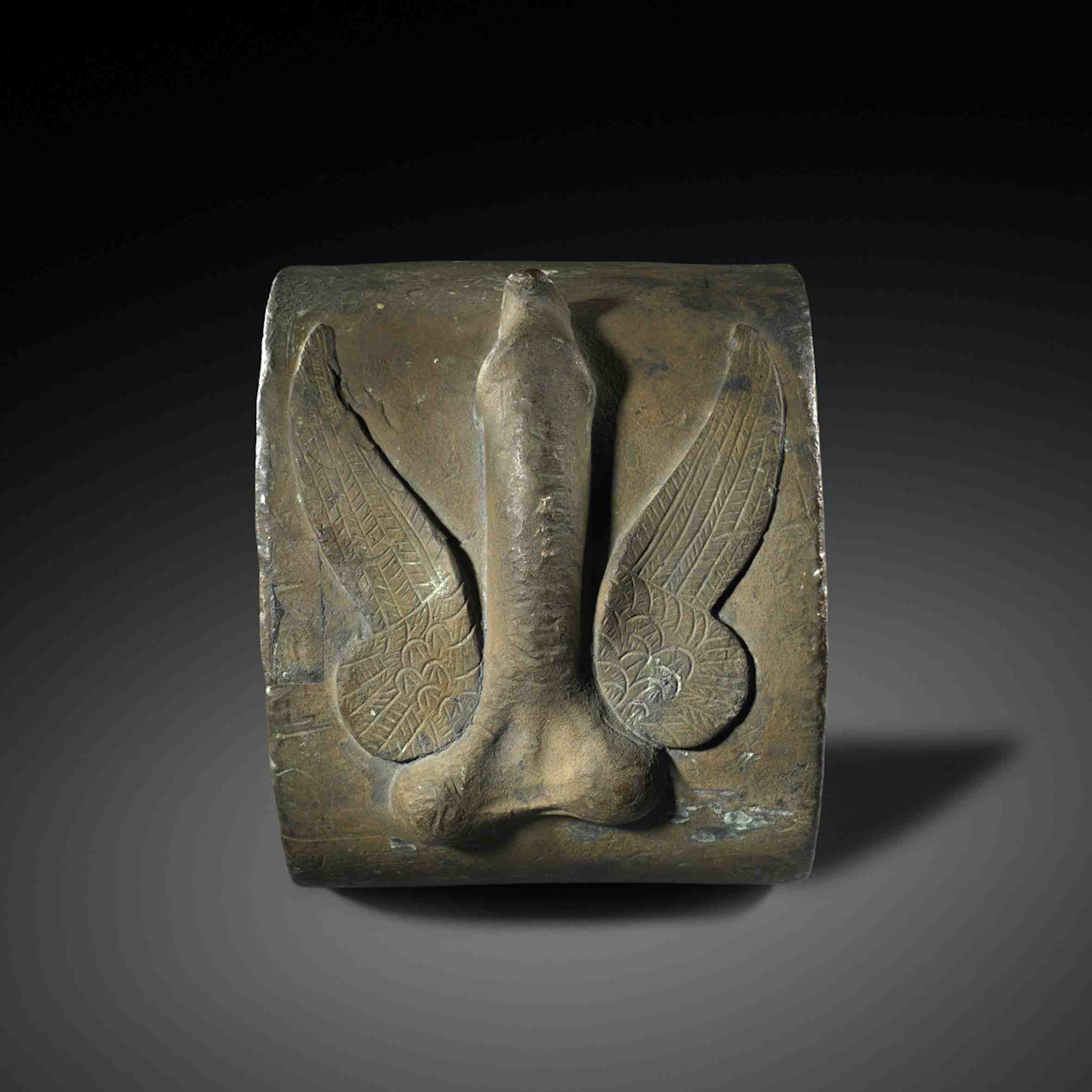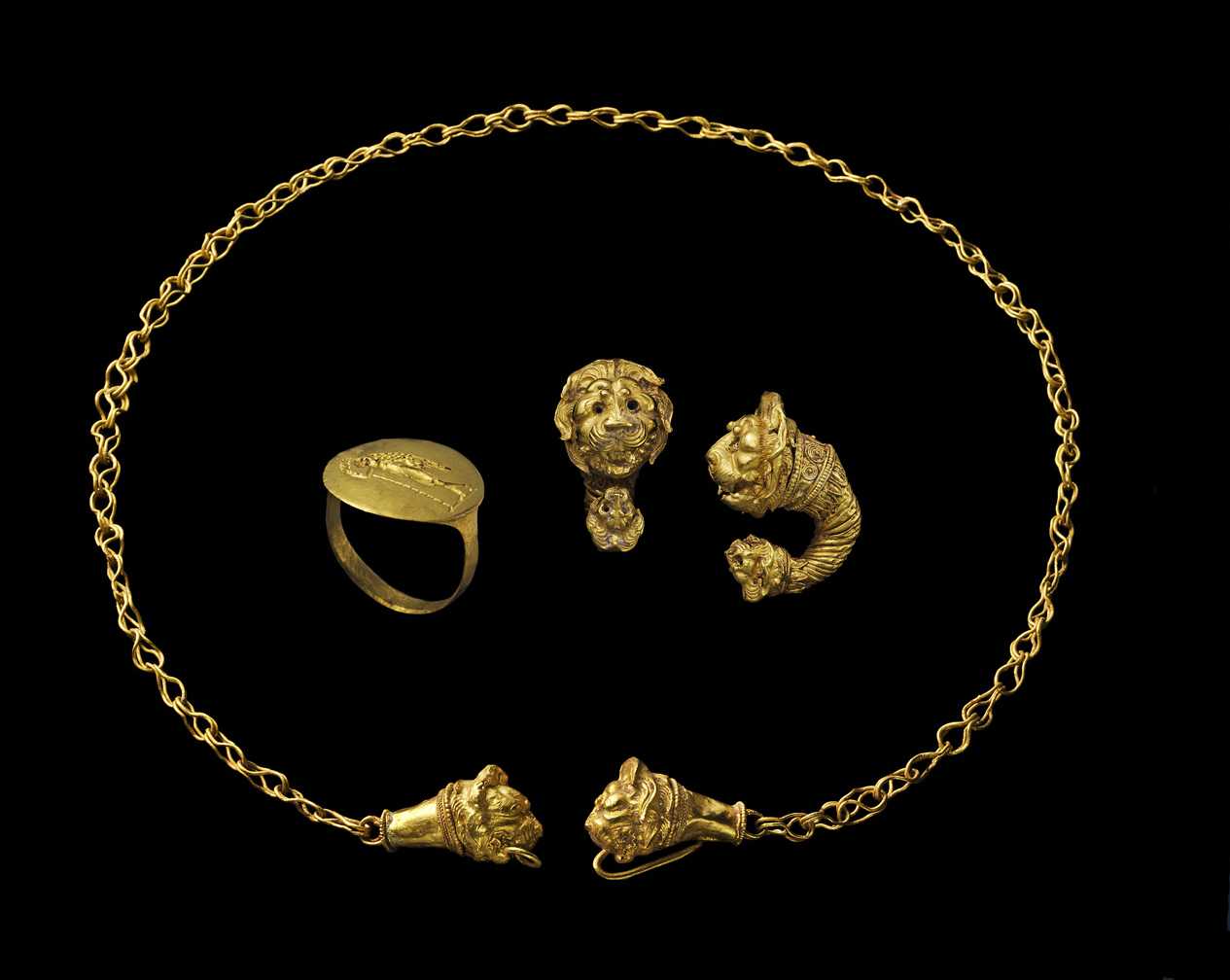Most probably from a ship, the rectangular plaque with a bas-relief motif of an erect phallus, flanked by outstretched wings, with detailed incised decoration.
Note
The naturalistic modelling of the genitalia is striking: the phallus’ erect form gives the testicles almost the impression of moving beneath the taut skin of the scrotum.
The phallus is a popular subject in both the Greek and Roman world – a symbol of fertility and good fortunate with apotropaic power. The wings indicate that the phallus is swift and accurate, it will not miss its goal, the female’s genitalia.
The plaque was most likely originally from a ship, fixed at the end of a prominent horizontal wooden beam, with the purpose of adverting danger and providing safe passage through treacherous waters. Similar bronze plaques have been found in the wreaks of Caligula’s two sumptuous pleasure boats, floating palaces, sunk in Lake Nemi. One of which is decorated with the head of the gorgon, Medusa, the epitome of apotropaic motifs.
In both style and workmanship, this plaque is very comparable to those found in Lake Nemi, and can also be dated to almost the same period, namely just before the middle of the 1st century A.D. This striking object stands out not only for its exceptional quality of its artistry, but also its rarity.







